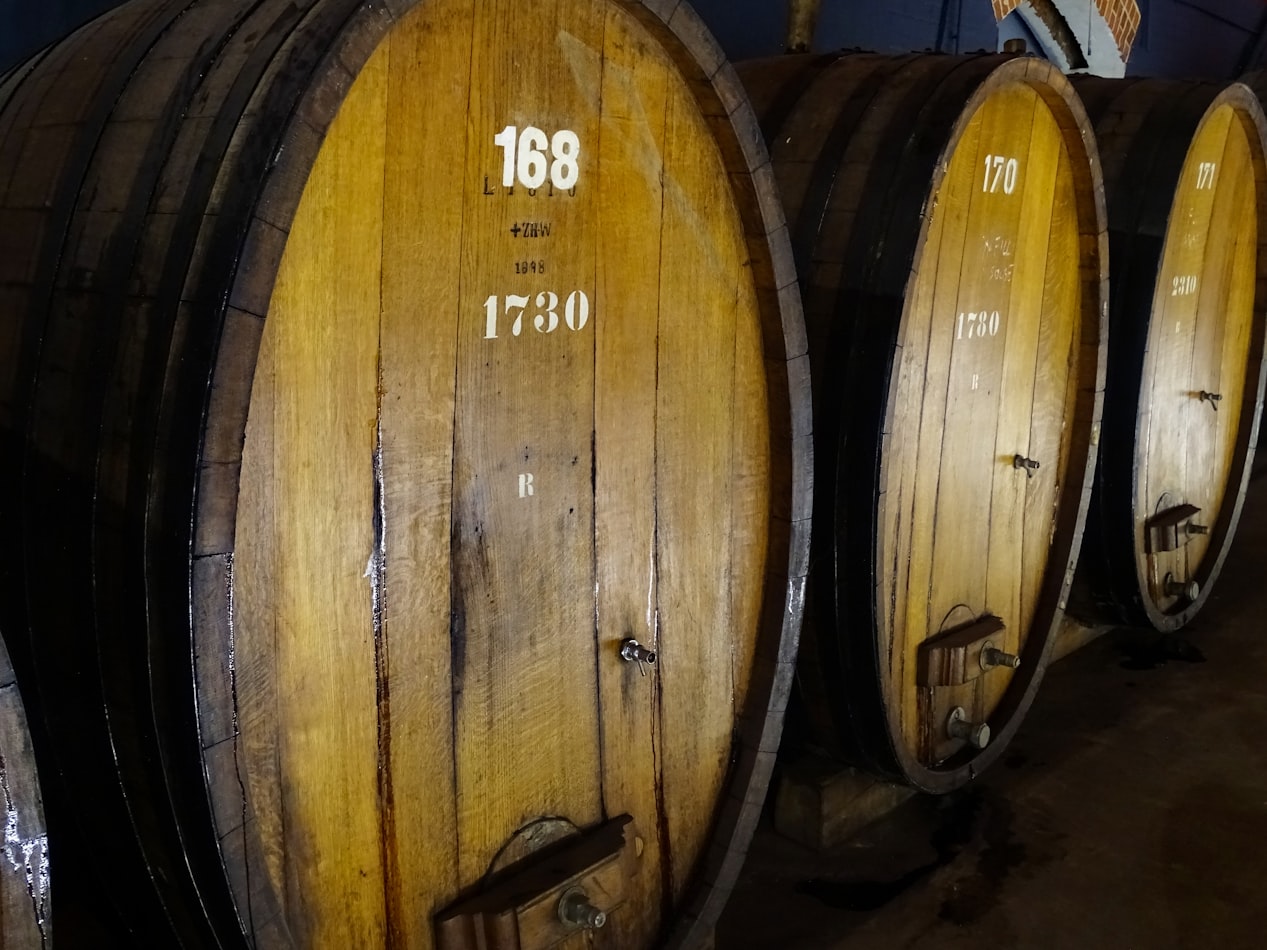Barrel

A barrel, also known as a cask, is a hollow cylindrical container. They’re usually made of wooden staves with wood or metal hoops binding them together.
Barrels have been always linked to wine. In ancient times they were used to transport wine while only relatively recently they have been used as a tool of the wine making process and a way to affect the wine final flavour.
Many aspects of a barrel are related to the final character of the wine. It’s size, material, level of toasting, age.. These are all variable that will change and determine how the final wine fermented in the barrel will taste like.
Barrel size
The barrel size is rather important and matters for two reasons.
-
One; wine notes (also) depends on the chemical compounds in the wood - almost always oak. The “flavours” associated with oak fermenting are vanilla, coconut, cinnamon, clove among others.
-
Two; wine will oxidise in barrels. That is because some oxygen reaches the wine through the cask, via its cracks and joints.
Big vs Small barrel
In a bigger vessel the ratio of wood to wine will be smaller than in a smaller barrel.
The same applies to the ratio of oxygen to wine.
So, wine fermenting in a foudre will oxidise less than wine fermenting in a demi-barrique.
It will also be in contact with less wood and its compounds. Thus wine from a bigger cask will show less of those notes associated with oak fermentation.
Some common barrel sizes are:
- Demi-Barrique : 112L;
- Bordelaise : 225L;
- Bourguigone: 228L;
- American Oak Hogshead: 300L – (79 US Gallons)
- Puncheon 500L;
- Demi-Muid 600L;
- Foudre 2000-12000L;
Barrel wood types
Barrels for wine making are almost only made of oak. Occasionally other types of wood are used, such as acacia and cherry.
One mature oak tree, after growing for decades, will result in only two barrels. So barrels are a rare, expensive tool!
Barrels can be French or American oak. Sometimes they are made of Slavonian oak.
America vs France
With “American” oak, what we really mean is oak from the States, Missuri generally. Because of the differences in climate, French oak is more “dense” than its American sibling. This seems to have an impact in the wine. With denser wood less oxygen passes onto the wine. So, broadly speaking, American oak barrels will pass more “flavours” and oxidise the wine more. That is why, American oak seems to be better suited for fermenting bolder grapes, which can better “take” a stronger interaction of the wood and oxygen influence.
American oak is not only used in the New World. IN the same way, French oak is not only used in Europe. For example, American oak is famously used in the production of Rioja wine in Spain.
As for Slavonian oak, it seems to add a different flavour spectrum to the wine, with notes of clove and nutmeg as well as more “richness” to the texture of the final wine.
Link to here...The barrel "age"
In wine making, the age of the barrel is rather important.
The newer the barrel the stronger will be the influence it has on the wine. It’s easy to understand that as the vintages pass, the wood will become more “neutral” and affect the wine taste and tannin level less.
Since barrels are expensive tools, in wine making there is often a tendency to age a part of the wine in new barrels and a part of it in older barrels. This is a way to keep the cost of the wine making process lower while trying to optimise the amount of flavours and wood quality the wine is exposed to.
Link to here...Barrel toasting
For once, in the wine world, ‘toasting’ is not a call to cheer.
When talking about barrels, toasting refers to the step of heating the inside of the barrel before usage.
Toasting barrels triggers a chemical reaction or two and is important for several reasons.
- It makes the wood more flexible which helps with the shaping of the barrel;
- It lower the bitterness of the tannins the wood will transfer to the wine;
- It will increase the mellow, spice and vanilla flavours that many wine lovers associate with oak ageing.
